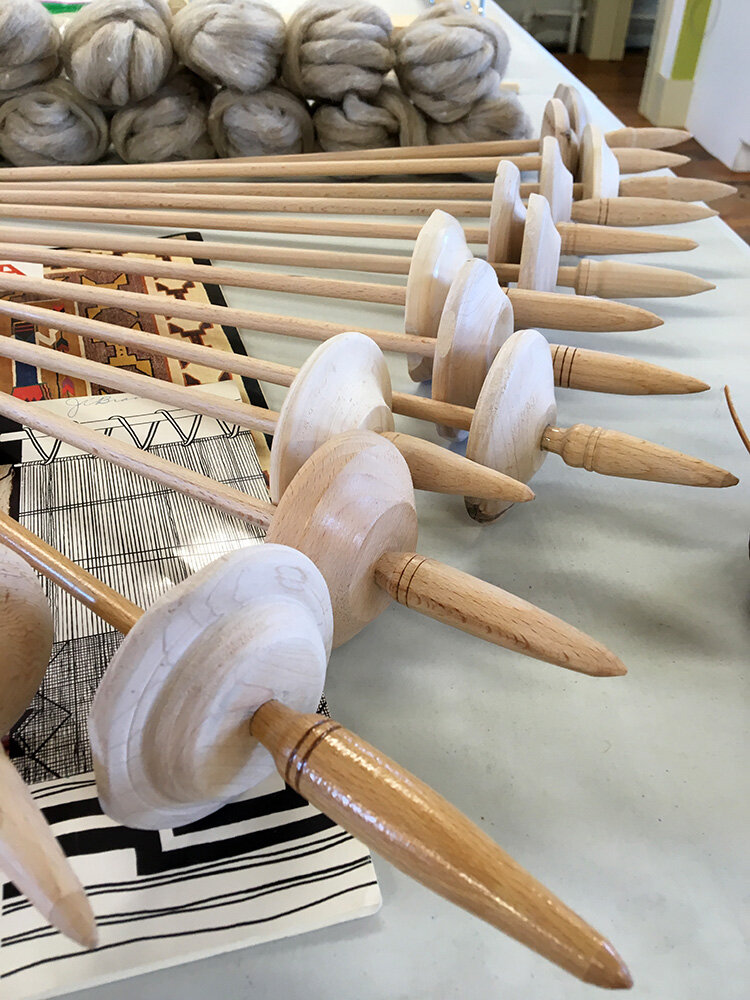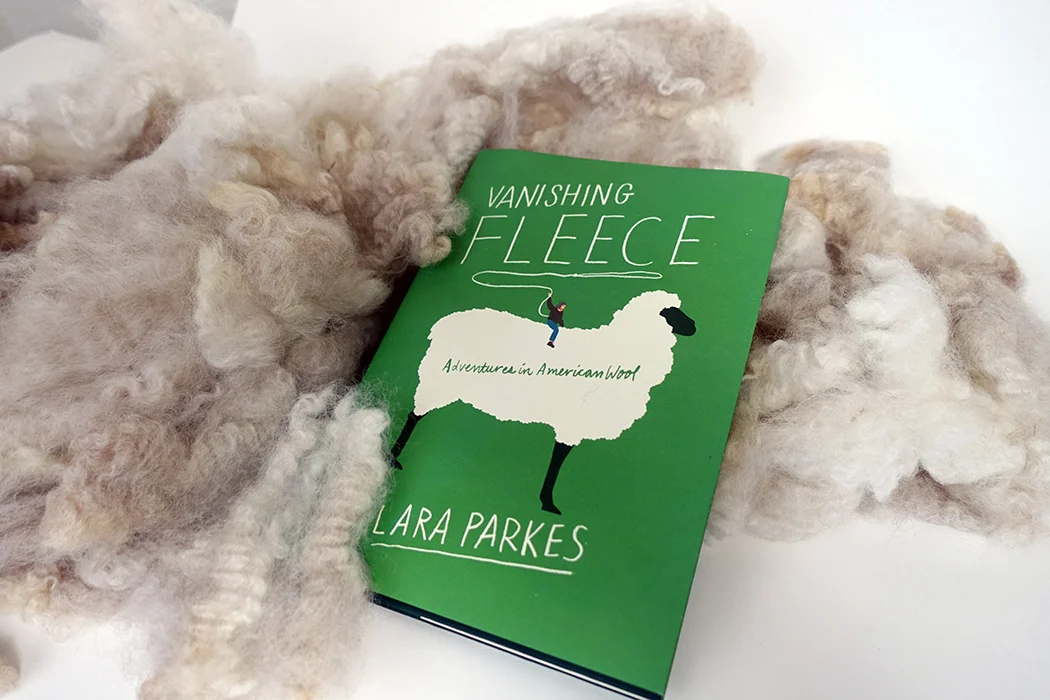In the northern hemisphere, winter is bearing down on us. With COVID and colder weather keeping us home, I am digging through my “to be read” shelves and making stacks around my favorite reading spot.* I thought you might like a few possibilities for your own favorite reading spot so I’ve listed some of my current favorites below. These are fiber-related books but I definitely have a good mix of other types in my stack. These books are also all more process-oriented. I have some history-of-fiber or tapestry books queued up to talk about soon.^
How to Weave a Navajo Rug and Other Lessons from Spider Woman
Lynda Teller Pete and Barbara Teller Ornelas are sisters and tapestry weaving and teaching powerhouses. I’ve had the pleasure of talking to them at various events over the years and I’m always delighted to connect with their knowledge, insight, and fantastic sense of humor. They are not only wonderful human beings, but they have a passion for teaching that I seldom see matched. Before COVID they traveled extensively to teach most of the year. They teach workshops for Diné (Navajo) students frequently as many families lost their weaving knowledge due to racist and repressive practices of the US government two generations ago (and more). There are young Diné weavers working again today thanks in part to Lynda and Barbara’s work. (See the resources guide in the book for how to contact some of them about purchasing their artwork.)
The Nature of Things by Tommye McClure Scanlin
Tommye McClure Scanlin is an artist from North Georgia. But I might also say that she is of North Georgia. She is an artist that is firmly rooted in this place she has lived all of her life and this is the thread I feel running through her artwork. Her new book, The Nature of Things: Essays of a Tapestry Weaver, has just been released from University of North Georgia Press.
….
That dedication to exploration is one of the narrative strands throughout The Nature of Things. Because developing her own designs and work is full of this nature of exploration: from her walks in the woods as she contemplates subject matter through various methods of designing including painting, drawing, dyeing, collage, and woven sampling. Seeing this process laid out repeatedly in this book as she takes us through her work in various series and about a variety of subjects, underlines the organic way she works. She pays attention to what interested her in a particular project and she works through that interest in another iteration. Hearing her talk about this and seeing the images she provides of a project as it evolves is a powerful way to communicate her artistic process and draw us into her work.
The Art is the Cloth: How to Look at and Understand Tapestries
This is the year of new tapestry books! Today’s example is Micala Sidore’s new book, The Art is the Cloth: How to Look at and Understand Tapestries from Schiffer Publishing.
This book is not quite what I expected it to be. I thought it would be a book with a fair amount of text that gave us some guidelines for how to understand what we’re seeing when we look at tapestries. I think I can be forgiven for that considering the book’s subtitle. Instead, it is a book with hundreds of images of tapestries and almost no text. It turns out this is a fantastic advantage for my education. You see, I’m really good at words. I like to string them together, often use way too many of them, and though I love pictures, if I can read about something, I’ll use my brain to mull the words instead of studying photos.
This book is ALL about the photos.
Anatomy of a Tapestry: Techniques, Materials, Care
Jean Pierre Larochette and Yadin Larochette along with Yael Lurie (illustrations) have produced a wonderful new book about tapestry. I read the whole thing this weekend and I highly recommend it. In fact, if you are a practicing tapestry weaver interested in French tapestry techniques, this book is an important one and absolutely should have a place on your shelf.
It contains information from a fairly wide swath of tapestry practice. Jean Pierre Larochette is an Aubusson-trained tapestry weaver with 60 or more years of experience who brings his practice to light quite poetically in this beautiful book. His daughter, Yadin Larochette, is not only a skilled tapestry weaver herself, having learned in her family’s workshop, but is also a textile conservator and provides a wealth of information in the last half of the book to help tapestry weavers create long-lasting textiles.
The Weaving Explorer
This gorgeous book dropped onto my desk last fall: The Weaving Explorer: Ingenius Techniques, Accessible Tools & Creative Projects with Yarn, Paper, Wire & More.
The Weaving Explorer by Deborah Jarchow & Gwen Steege is definitely a welcome addition to my weaving shelf. Gwen had a huge hand in the production of my own upcoming book, The Art of Tapestry Weaving, and I was so thrilled when she asked to mention my work in her own book in process with Deborah.
As you can tell from the subtitle, this is one of those books that takes on a wide swath of the weaving world. It is an adventurous romp through all kinds of things you can make from fibrous materials. And as in all books by Storey Publishing, it is beautifully produced with large, clear photographs in brilliant colors, clear text, and excellent how-to sections.
Vanishing Fleece: The story-telling of Clara Parkes
Clara Parkes has a new book and you’re going to want to go get it right away. It is called Vanishing Fleece: Adventures in American Wool. It came out the first of October and I spent my evenings that week reading it. If you are a fiber person and you aren’t yet a fan of Clara Parkes, I recommend taking a look at her work. She is doing advocacy for the fiber most of us love the most, wool. She is asking the questions about the wool industry in the USA and worldwide that need to be asked and with this book, she is actively looking for answers about how to save this fiber we need so much. I heard her speak on this subject when she was the keynote at the 2016 YarnFest in Colorado when she was on her book tour for her last book, Knitlandia.
In Vanishing Fleece, she tells the story of what she calls the Great White Bale. She came by a 676-pound bale of the finest Saxon Merino wool and decided to use it to explore the yarn industry in the USA. She divided the bale into four parts and had them spun in four different ways at four different mills in the US. She also explores dyeing at a range of dye facilities.







